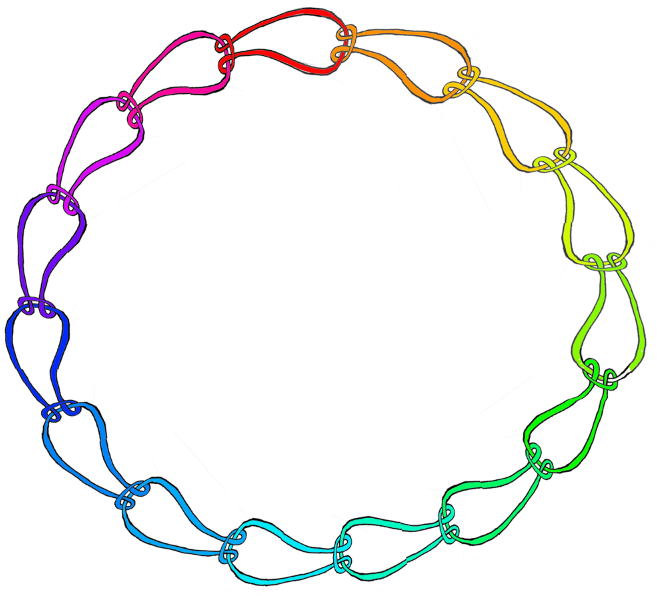I shared this question with Michael Freedman who came up with a solution similar to Larsen’s and asked me to post on his behalf.

He made a physical realization too.

I’ll address Anton’s question of how to prove that this is not the unlink. There is a general method of Haken and Waldhausen to show that manifolds are Haken, and hence have incompressible boundary (in which case they cannot have an unknot component). Exhibiting a simple hierarchy can prove that a manifold is Haken. One can show that the handlebody Freedman embeds has incompressible complement in the solid torus by exhibiting a simple hierarchy. The first stage is annuli going around the loops. After that it becomes compressible, and the next stage of the hierarchy is a compressing disk. The last stage is torus × I, and one can finish off with a hierarchy for this with annuli and disks. Inside the handlebody (at the top of the diagram), the link is also essential. There are a variety of hierarchies one could use here: first use 4-punctured disks to break it up into pieces of finitely many types (most of which look like the box in Larsen’s picture), then analyze each of these finitely many pieces. Hopefully this gives a flavor of how these certificates behave.
Addendum: Okay, I see what Anton is saying now. Larsen’s (or Mike’s) configuration is equivalent to:

This can be deformed to:

Inserting the Brunnian chain pattern into here gives the link shown in Anton’s comment, which Sam Nead proves is a non-trivial link in the comments.







